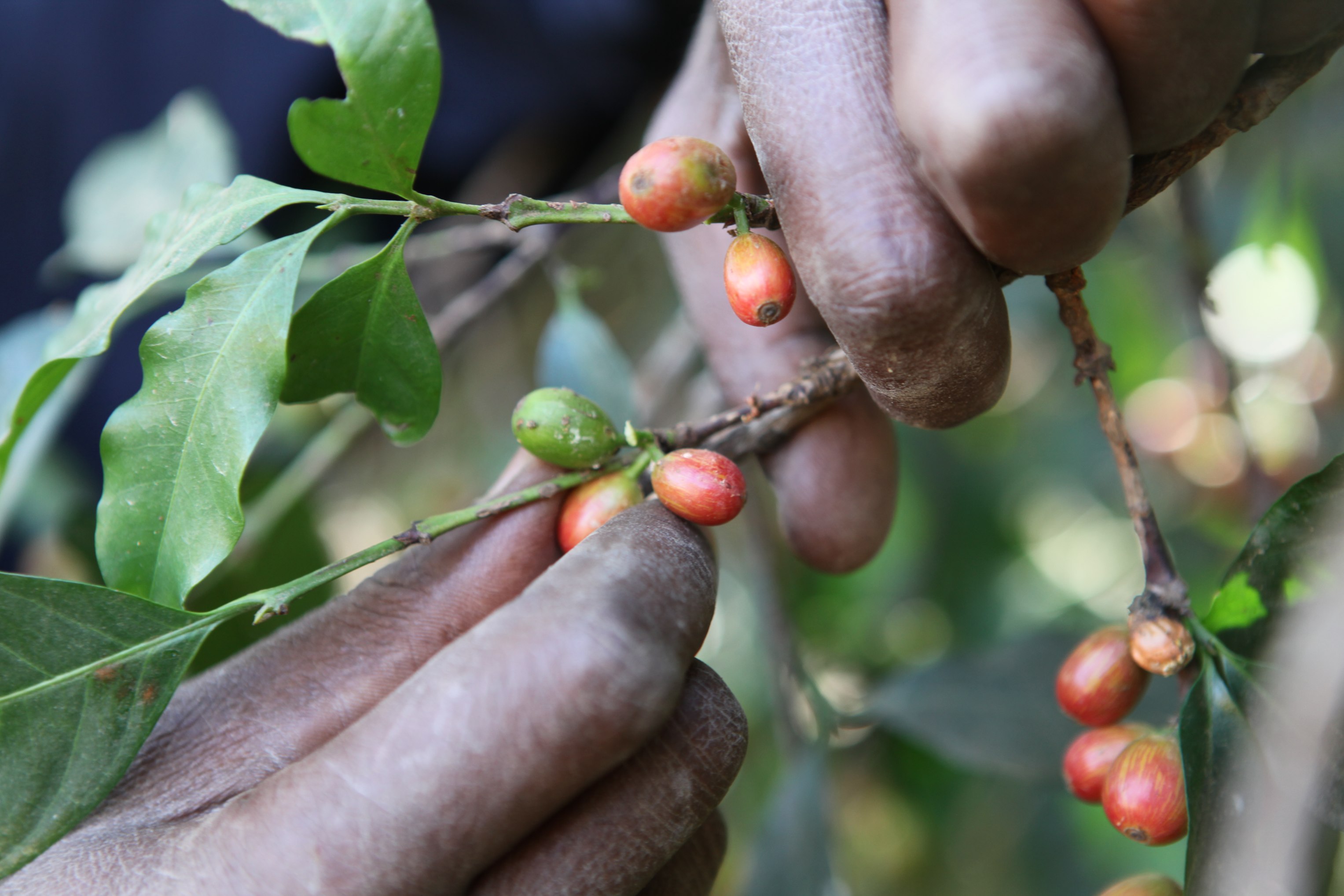Life-Sustaining Gardens
Water is scarce in Ethiopia’s northern region of Tigray. There is little difference between the dry and wet seasons, common in the tropics and the rest of Ethiopia. Usually by January, Tigray’s many villages dry up and become nests of desperation while families as well as the farmers depend on a series of small streams and wells.
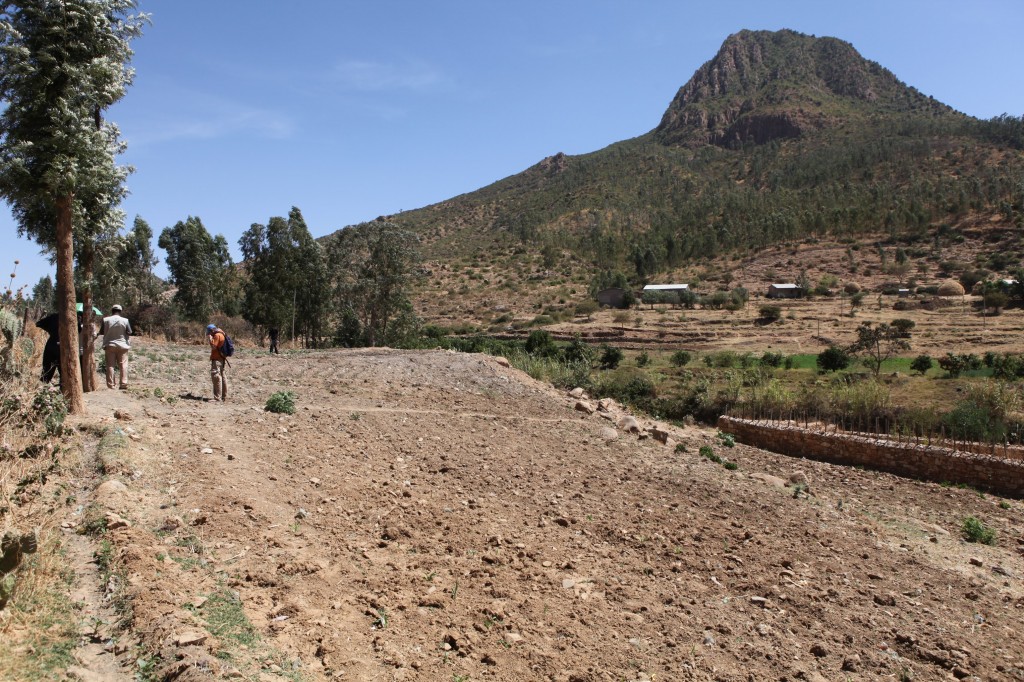 Therefore, respect for water runs deep in the veins of Ethiopian people. When Tekle Woldeheriat, 60 years old, learned he had tuberculosis in 2005, he set off south to the highland city of Bahir Dar, some 500km southwest of his hometown Adwa, on a journey for water.
Therefore, respect for water runs deep in the veins of Ethiopian people. When Tekle Woldeheriat, 60 years old, learned he had tuberculosis in 2005, he set off south to the highland city of Bahir Dar, some 500km southwest of his hometown Adwa, on a journey for water.
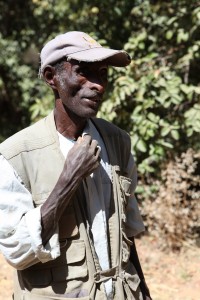 “People believe that the tsabel (holy groundwater) around Bahir Dar will cure any illness,” he explains. Ironically, Tekle’s pilgrimage had the opposite effect on his health. After making it to Bahir Dar, he was tested in a clinic and learned he was HIV positive.
“People believe that the tsabel (holy groundwater) around Bahir Dar will cure any illness,” he explains. Ironically, Tekle’s pilgrimage had the opposite effect on his health. After making it to Bahir Dar, he was tested in a clinic and learned he was HIV positive.
“I was cured from tuberculosis but not from the other disease,” he says emphatically.
Tekle was born in the city of Adwa and grew up on his father’s farm. He eventually became a migrant worker harvesting sesame seeds in the town of Humara, which straddles the border between what is now Eritrea and Ethiopia. He later became a soldier to “defend the motherland” against Eritrean rebels in the Ethio-Eritrean war.
During the war, Tekle stepped on a mine that sent shrapnel into his head, debilitating his left eye. In the same war, he lost his brother and when he returned to Adwa, the government had repossessed his family’s farm because “when you leave land untilled for more than two years, the government takes it.”
War, a Way of Life
Adwa has been shaped by war for more than a century and is perhaps most renowned for the 1896 Battle of Adwa, when a ragtag army of more than 100,000 conscripts defeated the Italians using guerrilla warfare tactics in the mountains surrounding Adwa.
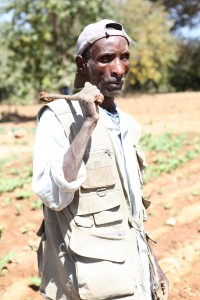 Almost 100 years later, Adwa became another hotspot as an important flank in the war with Eritrea, resulting in a increased urban population and a higher incidence of HIV/AIDS among the soldiers and the local population.
Almost 100 years later, Adwa became another hotspot as an important flank in the war with Eritrea, resulting in a increased urban population and a higher incidence of HIV/AIDS among the soldiers and the local population.
Adwa’s population before the 1998 Ethio-Eritrean war totaled some 24,000 people compared to nearly 43,000 today. Adwa’s HIV/AIDS prevalence is one of Ethiopia’s highest hovering around 10%.
Tekle was bedridden for two years after he learned his status until beginning antiretroviral therapy (ART). In 2006, he joined Adwa’s only People Living with HIV/AIDS Association (PLWHA) dubbed Lote Hiwot, meaning Life Change in Amharic. The group, which provides financial and psychological support, grew from 11 people in 2006 to almost 380 today.
“Adwa was the military headquarters and many prostitutes came to the city to find work. Many of them brought with them HIV/AIDS,” says Tekle Woldeselassie, Lote Hiwot’s director.
In March 2010, Lote Hiwot formed a partnership with USAID Urban Gardens Program (USAID UGP), and established the Gebre Haile group garden on the banks of the Mai Guagua river. In a war-torn city and a water-scarce region, a group of 110 people living with HIV, predominantly women began to successfully cultivate vegetables, fruit trees and even coffee.
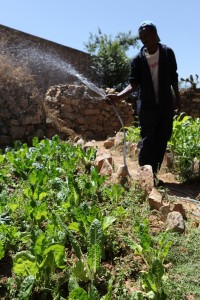 In addition to the vegetables grown for consumption, the group set aside a section of the garden to grow corn in the rainy season (June-September). They sold the majority of the harvest on the market, banking 1700 birr (USD $100) for the group garden, a considerable amount of money in a region where monthly rent barely hovers above USD $2 for gardeners like Tekle Woldeheriat.
In addition to the vegetables grown for consumption, the group set aside a section of the garden to grow corn in the rainy season (June-September). They sold the majority of the harvest on the market, banking 1700 birr (USD $100) for the group garden, a considerable amount of money in a region where monthly rent barely hovers above USD $2 for gardeners like Tekle Woldeheriat.
“At first the gardeners resisted because they were receiving handouts from other NGOs and it took a lot of effort to convince them to work. Through group discussions, we slowly sensitized them to urban agriculture, and now they have a sustainable garden,” says Alem Seged, USAID UGP’s implementing partner coordinator.
The Gebre Haile garden’s success has not only been in cultivation but the garden’s four savings & loan groups which have saved over 7000 birr (USD $415) on top of the income earned from the vegetable’s sales and personal consumption.
In February 2011, the group began growing onion, Swiss chard and peppers. “Many of the older gardeners have a background in agriculture and this garden is our sole source of income,” says Tekle.
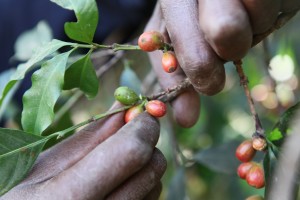
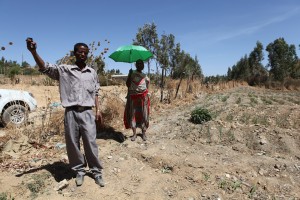 Thanks to the nearby river, irrigation is easy, and gardeners have built small irrigation canals to ease conveyance. Besides water scarcity, Adwa’s gardeners must deal with poor top soil. Due to these reasons, the city’s main industries have slowly turned from farming to trading and civil service.
Thanks to the nearby river, irrigation is easy, and gardeners have built small irrigation canals to ease conveyance. Besides water scarcity, Adwa’s gardeners must deal with poor top soil. Due to these reasons, the city’s main industries have slowly turned from farming to trading and civil service.
“When I was young, we had a garden in every school and we had agriculture class where we learned to grow plants,” says Alem Seged.
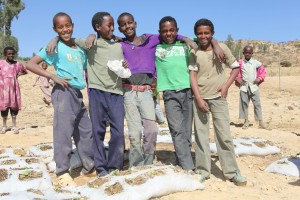
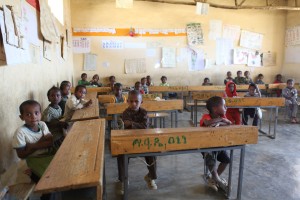
About USAID Urban Garden Program
This article was written by Nicholas Parkinson, Communications Officer, USAID UGP.
Started in 2008 with funding from the President’s Emergency Plan for AIDS Relief (PEPFAR), USAID Urban Gardens Program (USAID UGP) is implemented by DAI and designed to improve the nutrition and income of women and orphans and vulnerable children (OVC) affected by HIV/AIDS through urban and peri-urban agriculture, which includes gardening and raising livestock.
The Gardeners participating in USAID UGP often do not have the means to purchase and consume nutritionally adequate, safe and quality foods such as vegetables. Providing nutritional support to people living with HIV/AIDS (PLWHA) is critical for making ARV’s more effective. In addition, excess production from urban gardens can provide income for PLWHA to address other needs.
Between September 2008 and September 2011, the USAID Urban Gardens Program reached 34,200 households and over 118,000 direct and indirect orphan and vulnerable children beneficiaries through micro, household, school and community gardens in Ethiopia. In addition, the program has provided agriculture-related education and training, tools and input. In Ethiopia, USAID UGP has created over 330 group and school gardens operating in 23 cities with the aim of improving both the income and nutrition of its Gardeners.
Learn more about the Urban Gardens Program and Urban Agriculture in Ethiopia here.
Photos: Pol Cucala

